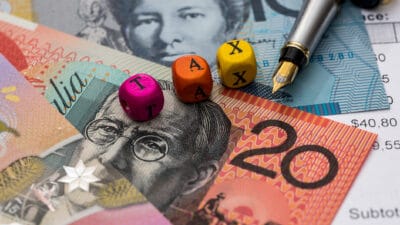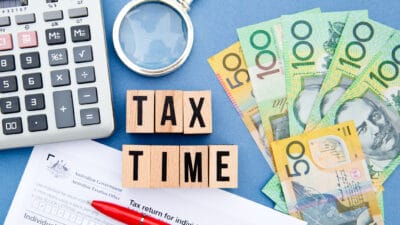Looking to supersize your stage three tax cuts by investing in S&P/ASX 200 Index (ASX: XJO) shares?
With history as our guide, that could prove to be a great road towards building your wealth.
As you're likely aware, the stage three tax cuts take effect this financial year. Meaning from 1 July 2024, everyone earning more than $18,200 a year should expect to pay less of their hard-earned paycheques back to the ATO.
But what you choose to do with the extra cash in hand could make a tremendous difference to your financial well-being.
Why invest your tax cuts in ASX 200 shares?
The pending stage three tax cuts will see most Aussies significantly better off than they were before.
Especially if they opt to invest that extra cash in ASX 200 shares.
"While this will provide much-needed cost of living for many, others will be intending to splurge the extra cash, or stash it away in savings, which could easily be invested instead," Brendan Doggett, Sharesies AU country manager, told the Motley Fool.
According to Doggett:
For example, if you earn the average national salary of $90,000 a year, you'll get $160 back in tax cuts each month from 1 July. This could be turned into $11,396 in five years' time if invested every month to buy ASX stocks, thanks to compound interest.
That figure assumes there are no changes to future tax rates and is based on the 6.8% average return posted by the ASX 200 over five years.
As you'd expect, for higher income earners the benefits of investing those stage three tax cut returns will be greater.
"For those who earn even higher, say $150,000, this would look more like $310 extra each month, and could result in a healthy $22,079 in stocks by 2029," Doggett said. "Building this extra cash into your monthly investment routine is a simple way to add to your portfolio without much of a lift."
And the longer your investment horizon, the better your returns from ASX 200 shares are likely to be.
According to Doggett:
For investors with a long-term gaze, $160 invested every month could turn into $31,493 in 10 years. When added to your super balance and any existing investments you may have, that's a more-than-healthy contribution to a retirement fund that can be easily set aside monthly and forgotten about.
The figures here are based on the average ASX 200 rate of return of 9.3% over 10 years.
Which is not to say investors can't reap some benefits with a shorter-term horizon.
"As for younger investors whose sights are more set on milestone 'firsts' such as getting on the property ladder or starting a family, fantastic returns can still be made in the short-term," Doggett said.
"If you invest your extra income every month, you'd have $6,046 in three years' time. Not bad for what could otherwise be splashed on a monthly grocery shop or trip to the pub!"
This figure is based on the average ASX 200 rate of return of 3.3% over three years.
The benefits of dollar-cost averaging
Now if you're set to receive a sizeable tax refund, you might be tempted to invest it all in ASX 200 stocks in one go.
While that may not be a bad idea, Doggett told us that dollar-cost averaging can help investors form a lifetime wealth-building habit.
"In addition to seeing more in their pockets each month, many Australians are also preparing to receive a large tax refund, which could also be invested," he said.
Doggett added:
While investing this as one lump sum might give you a higher return, quicker, it won't turn investing into a habit, which is really what's needed to make long-term gains.
Even though investing little and often every month (via dollar-cost averaging) might feel slower, this 'set and forget' mindset will help you maintain momentum and grow your money in the long-run.








